How to make a good cup of hand-made coffee at home?
For professional baristas, please follow the coffee workshop (Wechat official account cafe_style)
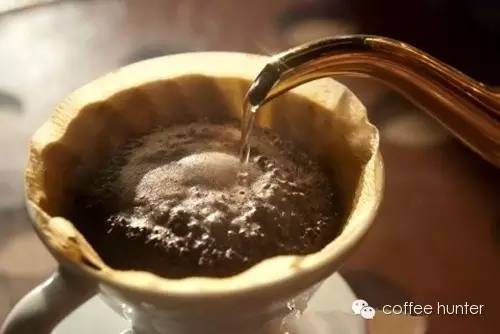
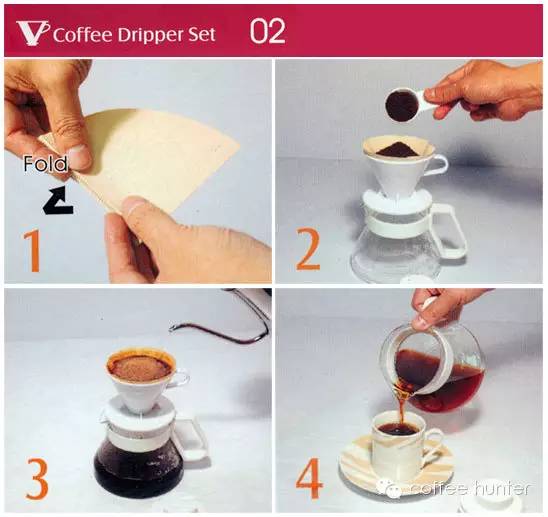
We often see this on many coffee packages:
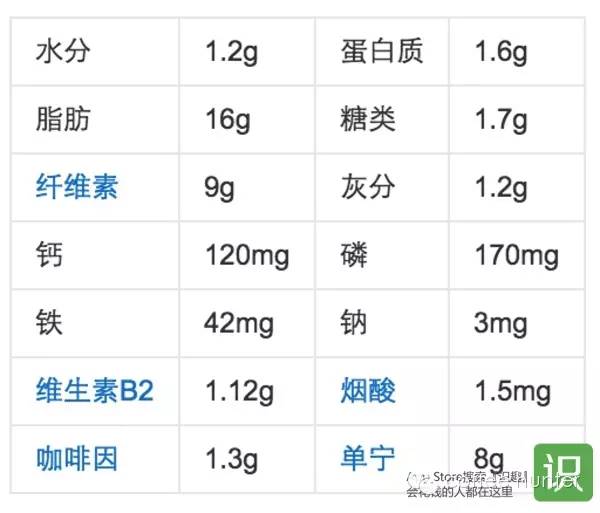
List of nutrients in every 100 grams of coffee beans, picture source: Baidu encyclopedia
This is the general idea of the substance in coffee, which varies according to different varieties and different baking degrees.
The substances in the table will eventually be boiled into what we can drink, and only 30% of the substances will dissolve into the water, and if we do it ourselves, the number is usually 15%, 25%. We call this percentage the extraction rate.
It seems to be boring before it starts, so Here we go should start making coffee.
The first step is to prepare the equipment for making coffee
Soldiers need a hand-lined weapon to fight a war, and it is also necessary to make coffee. The necessary equipment is a hand-made pot filter cup filter paper sharing pot bean grinder.
Novice set: hand-washed pot filter cup filter paper sharing pot bean grinder
Advanced set: hand-washed pot filter cup filter paper sharing pot bean grinder sealed can electronic scale thermometer timer
Open hanging set: gold-plated hand punch pot, gold-plated filter cup, gold-plated filter paper, gold-plated sharing pot, gold-plated bean grinder, gold-plated seal pot, gold-plated electronic scale, gold-plated thermometer, gold-plated timer (gold Saint, price per cent, gold-plated timer, the more expensive the equipment, the better the quality is real, and there is a lot of room to play)
Hand punch pot
Hand brewing pot is necessary for hand brewing coffee. When choosing a hand brewing pot, you need to consider "the stability of water flow, the heat preservation of the pot body and the safety of the handle". Different designs of the body and spout of different hands will bring different effects, the first condition is actually suitable for their own hands to hold, with accustomed to better control the flow of water, make delicious coffee.
Filter cup
Used to match the filter paper to filter coffee grounds, you can also directly buy the filter cup of the metal filter screen, the advantage is that you do not use the filter paper as a consumptive material, but it is a little troublesome to clean, and there is not enough room to adjust the cooking mode during the operation. Different brands of filter screen thickness will be different.
Several recommended ones:
V60: the one with the highest utilization rate, fast flow rate, diversion line, suitable for most coffee beans
Kono single hole: my favorite, slightly slower, suitable for African beans and Central and South American beans
Kalita fan-shaped single hole: slow flow rate, also suitable for many coffee beans, can show a better alcohol thickness.
Sharing pot
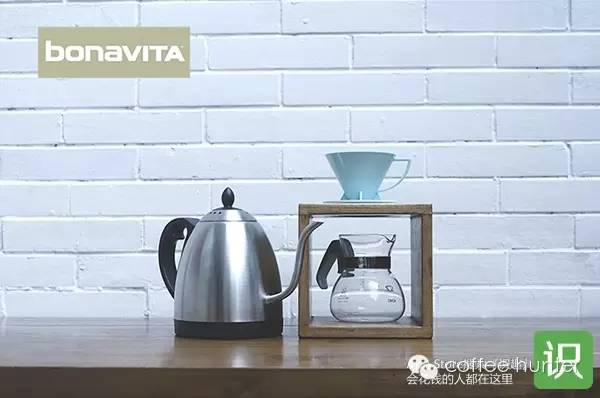
It's the one in the middle of the wooden shelf in the picture above.
Can be used to hold coffee, there is a scale to meet their preferences on the line, if not at least need to have a scale, because the powder-to-water ratio is involved.
Powder / water ratio, that is, the ratio of coffee powder to water, those who like lighter ones can use 1:18. Those who like thicker ones can use 1:13. The middle of coffee taste is 1:15. The taste of coffee, as an act of perceptual existence, still needs to be adjusted according to its own taste preferences. My favorite 1:13 may not be your favorite 1:15 at 1:8. I'm sorry, I played with tongue twisters.
Bean grinder
In commercial equipment, bean grinder occupies a very important position, coffee powder grinding thickness and uniformity will affect our hands of coffee, usually classified by the type of cutter head to distinguish: flat knife, bevel knife, rail teeth.
No matter which kind can make good coffee, flat knife, rail tooth grinding is more uniform, extraction will be more uniform, cone knife cutting surface is different, will bring more layering. But do not choose a broken bean grinder, rather than a bean grinder, grinding is difficult to ensure uniform, the thickness is very uneven, will lead to the taste is too complex, sometimes there will be a dirty feeling.
Sealed tank
If the coffee beans are not used very quickly, they should be kept in a sealed jar, away from sunlight and exposure to high temperatures.
Electronic scale
The scale is used to weigh the quality of powder and the quality of water injection to better control the ratio of water to powder.
Thermometer
For precise control of water temperature, it is necessary to brew it with a suitable water temperature. if there is no thermometer, open the lid and rest for two minutes before use. too high temperature will bring out too much substance in the coffee, including bad temperature. on the contrary, it will make the coffee too "talkative".
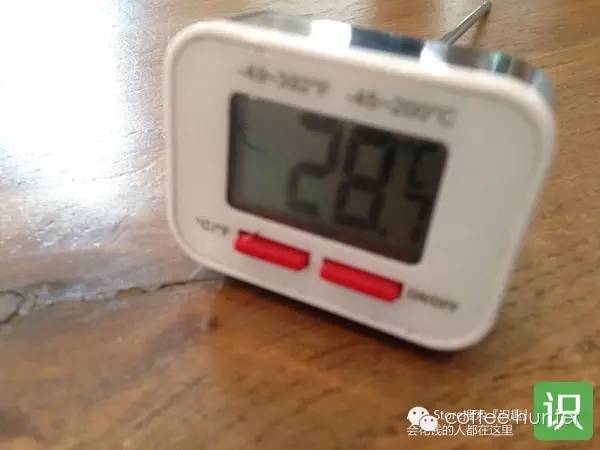
timer
Used for accurate timing. The longer the time, the more substances are extracted, which is similar to the temperature, and the shorter the time is, the lighter the taste is.
Step two, choose a favorite coffee bean.
Coffee beans contain a lot of chemicals. After roasting, a series of complex degradation and polymerization reactions can derive 850 chemical components, of which 1/3 are aromatic, that is to say, there are far more known coffee aromas than wine and cocoa.
Different coffee beans after different roasting, can bring endless changes, will always find their favorite one, so how to choose? Here are some tips and tips to help you find your favorite coffee beans.
Coffee beans are divided into several major producing areas in the world, including Africa, Central and South America and Asia.
Africa: the more famous Africa is Ethiopia (Ethiopia), which is divided into nine major producing areas. The boutique coffee bean producing areas that people often drink are Sidamo, Yegashifi, Hara and Lime, and the rest are commercial bean producing areas.
African water-washed beans are characterized by jasmine, lemon, orange, peach, almond, tea, etc., such as the sun, there will be red wine, white wine, ripe berries, fermented fruits and other flavors. (each one will have its own characteristics, not all.)
Boutique beans and commercial beans (there is a worldwide organization called CQI, full name Coffee Quality Institute, Coffee quality Appraisal Association, which classifies coffee beans with a score of more than 80 on a cup test into boutique coffee, and the rest are commercial beans. We generally need to buy boutique coffee at home, which will have better flavor and taste. The variety of fine coffee will be Arabica, not Robusta)
Central and South America: there are also many producing areas in Central and South America, such as Brazil, Colombia, Guatemala, Costa Rica, Panama, El Salvador and Nicaragua.
Usually, the characteristics of Central and South America are concentrated in caramel, apple, almond, cocoa, dark chocolate, nuts and other flavors. Beans in many producing areas are well balanced and have a good taste.
The continuous progress of the coffee market in recent years has prompted the landowners to constantly improve their planting and processing methods. Panama and Costa Rica have also seen a lot of eye-catching coffee, such as Emerald Manor, Incht Manor and so on. The microclimate in the manor has also led to the diversity and obvious flavor of coffee beans, and we can feel more flower aromas and sweet and sour fruits. The past two years have brought a lot of amazing coffee beans to coffee lovers all over the world.
Asia & Islands: Indonesia, Papua New Guinea, Blue Mountains, Kona.
Indonesian coffee beans have obvious characteristics, the most common drink is Mantenin, will have a strong taste, strong cocoa, dark chocolate flavor, as well as often with wood, spice flavor, you can choose a mantenin if you like heavy flavor.
Papua New Guinea's performance is mediocre, close to that of Central and South America and African beans.
Blue Mountains, rare products, good Blue Mountains of course delicious, but also more difficult to buy, do not believe in the "Blue Mountain flavor"!
Kona, a small amount of beans from Hawaii, has a good flavor and can be tried.
The third step, start work.
1. Weigh coffee beans (12-15g)
Choose the amount of coffee beans according to your drinking needs, and weigh more if you want to drink more.
2. Grind to the right thickness

The picture shows the normal grinding degree of the hand, which feels granular to the touch. You can adjust it after you are familiar with the hand punch.
After grinding, you should first smell the aroma of the freshly ground powder. At this time, 30s is the time when the aroma is the richest. The small molecules in the coffee begin to volatilize. Smell it quickly and start the next step. Don't let the good smell go to waste in the air.
Don't ask me why the ground coffee you bought doesn't taste so good, the aroma is gone, and it's out of tune. Do you know?
So the shelf life is also mentioned:
Fresh coffee beans should be drunk within two months, the longer the time, the more flavor loss, put half a year of beans can also drink, but will almost lose most of the good flavor, it is not recommended to use coffee beans for so long. In general, the cooked beans in coffee shops are only used for less than two weeks.
3. Soak the filter paper and steam it
The purpose of soaking filter paper is to wash away the smell of paper from the pulp. if bad filter paper is not soaked, it will make your coffee full of filter paper flavor.
Stuffy steam
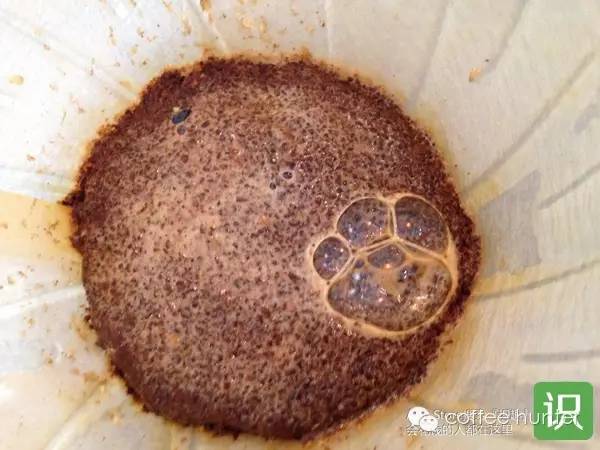
When steaming, wet all the powders with about 20-30g of water, let the coffee powder absorb enough water and remove carbon dioxide from the cell wall, so that the soluble substances in the coffee can be extracted later.
Note: when steaming, water should be injected from the center of the coffee powder, circle clockwise (counterclockwise) to the outermost, and the water should not be washed directly to the edge of the filter paper.
4. Water injection and brewing
After one-off water injection from 1 minute to 1.5 minutes, the time should not be too long, and the water temperature should be between 86 and 94.
Too high temperature will cause tannin to decompose into pyrosylic acid, and over time will flush out more substances in the coffee, including bad taste, so too high water temperature and too long time are sometimes the main culprits for making coffee at home.
African beans suggest: 88-92 degrees
Central and South American beans suggested: 89-92 degrees
Indonesian beans suggest: 88-90 degrees
Combining these points, there is another tip:
In brewing, the water flow should not be too high, should gently fall on the surface of the water, can not splash, the flow should also be kept stable circle, still can not rush to the most edge of the filter paper (directly to the edge of the water will disturb the entire cup of water, and some of the water will directly pass through the filter paper, causing the coffee flavor to fade), circle from the center to the outside and then draw back.
This action requires frequent contact to become proficient, whether you drink it yourself or for a friend to look professional enough.
5. Drink
What, you have to teach you to drink?
If you are thirsty, you can drink it in one breath, but watch out for burns
Just brewed coffee temperature is still above 80 degrees, you can first taste, and then slowly drink two mouthfuls, half a minute apart, when the coffee temperature dropped to more than 70 degrees, our taste buds can feel the most aroma, at this time the coffee temperature also becomes suitable for drinking, this time more flavor will cover our taste buds, and when breathing through the nasal cavity, bringing a very pleasant feeling. Only in this way can a cup of coffee be drunk into the soul.
Similarly, containers give us some different experiences:
The fine-mouthed cup will gather together and feel more fragrance.
The ceramic cup will feel better alcohol thickness when you drink it.
The glass tastes relatively refreshing.
Important Notice :
前街咖啡 FrontStreet Coffee has moved to new addredd:
FrontStreet Coffee Address: 315,Donghua East Road,GuangZhou
Tel:020 38364473
- Prev
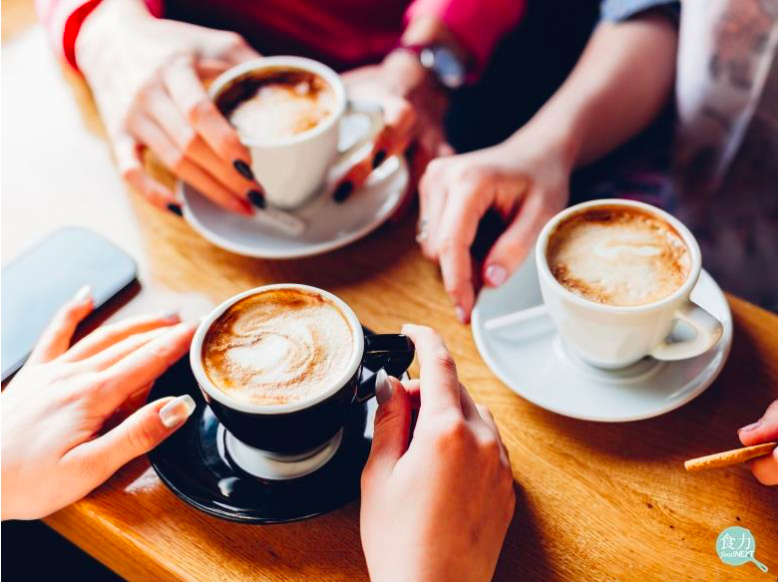
Can you distinguish the huge espresso genealogy?
Professional barista communication Please follow the coffee workshop (Wechat official account cafe_style) the food espresso genealogy you should know includes Campbell Blue, Macchiato, Caramel Macchiato, Cappuccino, Latte, Brevie, Mocha, Pingbai, American and other coffee. Zola (Japanese designer and picture book painter) espresso is good, but not everyone can bear it
- Next
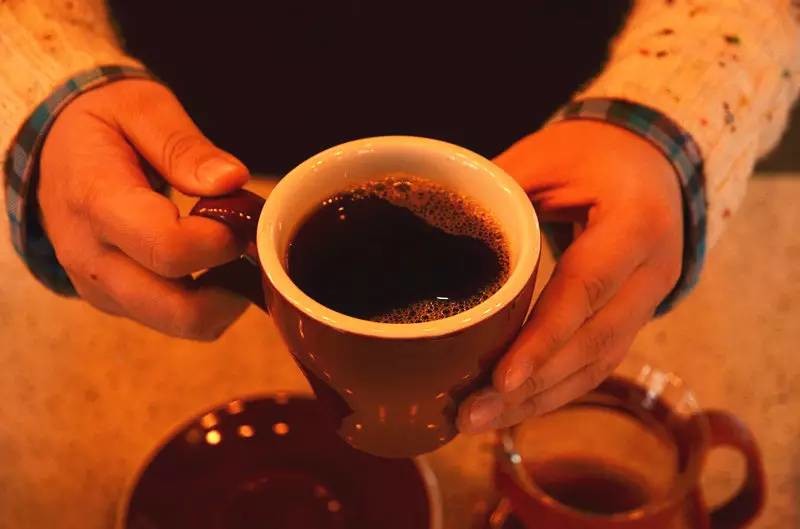
The knowledge flow picture of the basic equipment of hand-made coffee explains the simple introduction teaching in detail.
The exchange of professional baristas please pay attention to the coffee workshop (Wechat official account cafe_style) hand-brewed coffee is the most popular way of brewing coffee in today's boutique coffee era, whether its production method or coffee flavor is a knowledge worthy of in-depth study and discussion. This kind of follicular brewing coffee is popular all over the world.
Related
- Beginners will see the "Coffee pull flower" guide!
- What is the difference between ice blog purified milk and ordinary milk coffee?
- Why is the Philippines the largest producer of crops in Liberia?
- For coffee extraction, should the fine powder be retained?
- How does extracted espresso fill pressed powder? How much strength does it take to press the powder?
- How to make jasmine cold extract coffee? Is the jasmine + latte good?
- Will this little toy really make the coffee taste better? How does Lily Drip affect coffee extraction?
- Will the action of slapping the filter cup also affect coffee extraction?
- What's the difference between powder-to-water ratio and powder-to-liquid ratio?
- What is the Ethiopian local species? What does it have to do with Heirloom native species?

